2012.05.22 09:41
the ethics of parametricism/emergent architectural thought and reification
Let me add another facet (writing here on the fly, so it may not be all too coherent). Besides the mimicry of a myth (so to speak), is not the whole process of getting the 'code' just the way you want it--the continual tests and retests--also something like an inverted (if you will) form of mimicry: "I know what I want it to look like; I just have to find the right parameters." Or, put in a way (hopefully) like above: "I know what nature I want it to look like, but I still have to figure out the right numbers."
In the little bit of parametrics I've dabbled with, using very old (1996) software, I found that using "numbers" that were outside the 'expected' parameters resulted in the most 'novel' results.
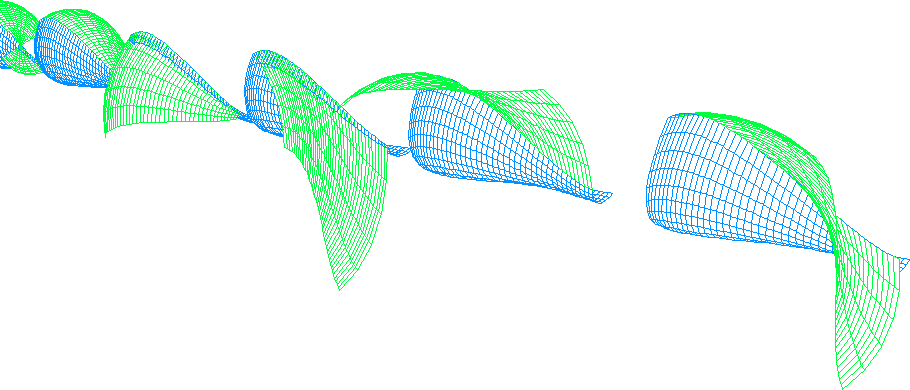
A very early example of the 'playing', 2000.
Does it still just boil down to a sophisticated play of/with geometry?
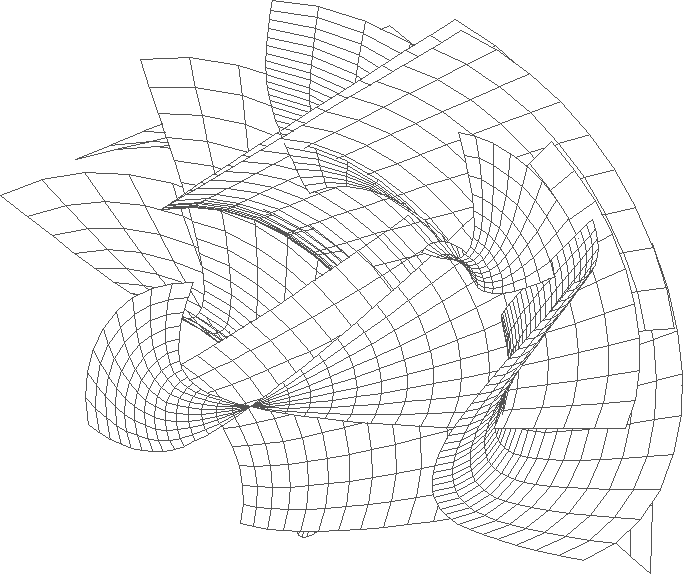
And adding the 'unexpected' thinking, imagine the image above as the 2-dimentional 'grid' plan of a city. It's like actually stepping out of the mimicry.
| |
2012.05.22 14:55
the ethics of parametricism/emergent architectural thought and reification
...ethicality is not an issue because I'll freely admit to using "parametrics" just to see what geometries might emerge, especially by stepping outside of the "expected" process.
2012.05.23 09:58
the ethics of parametricism/emergent architectural thought and reification
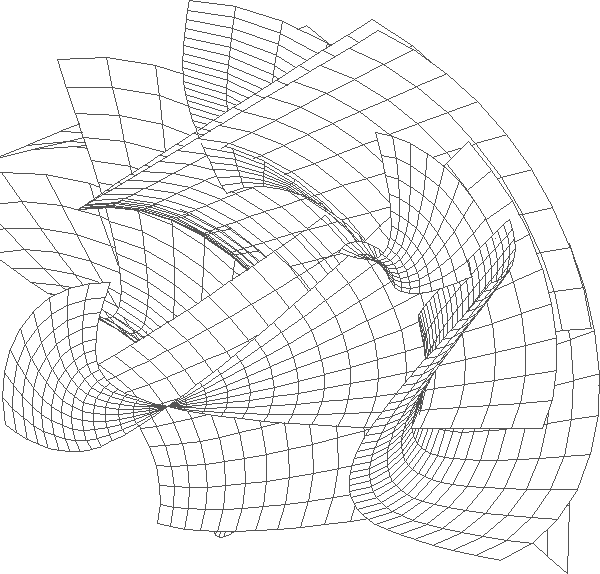
And adding to the 'unexpected' thinking, imagine the image above as the 2-dimentional 'grid' plan of a city. It's like actually stepping out of the mimicry.
What I mean here by "actually stepping out of the mimicry" is that even the image above is a form of mimicry in that it really isn't a bunch of 3-dimensional curved surfaces in space, rather a coherent group of lines that when perceived cause our brain to imagine a bunch of 3-dimensional curved surfaces in space. To see these lines as a grid plan of a city, however, you really have to adjust your imagination. And I'll say that it is within that act of "adjusting the imagination" where the crux of design happens.
I also asked, "Does it still just boil down to a sophisticated play of/with geometry?" I'd say that for the most part yes, in that the base is (many) points in space. Algorithms are used to define the surfaces between the (many) points in space. Super-fast computation puts all this sophisticated geometry in flux (and potential manufacture). Script writing, or lets say the process, is here a continual "adjusting of the imagination"--literally continually adjusting the image--and that is why is it now easy to believe that process is indeed also design.
I now wonder if the process/design of parametrics is better described as 'artificial design' because it still lacks the ability to imagine itself differently than how it is programmed to imagine itself.
tammuz, as to your other question:
do you think that the reaction against a referential-discursive practice of architecture (and specifically against eisenman) resulted in a pathology founded on the denial of the role of the reference within architecture that we witness within the rhetoric of emergent parametricism, and more widely, within the current strains of materialist architectural thought?
I'd feel more comfortable answering if you clarified or referenced it with some examples, and maybe even adjusted it to what I just wrote above. If I understand your question correctly so far, it hinges on the "pathology founded on the denial of the role of the reference" and it looks like I might think of that more in terms of 'the role of imagination' rather than the adherence to one design ideology or another.
2012.05.26 14:38
the ethics of parametricism/emergent architectural thought and reification
from wikipedia:
Transhumanists engage in interdisciplinary approaches to understanding and evaluating possibilities for overcoming biological limitations. They draw on futurology and various fields of ethics such as bioethics, infoethics, nanoethics, neuroethics, roboethics, and technoethics mainly but not exclusively from a philosophically utilitarian, socially progressive, politically and economically liberal perspective. Unlike many philosophers, social critics, and activists who place a moral value on preservation of natural systems, transhumanists see the very concept of the specifically "natural" as problematically nebulous at best, and an obstacle to progress at worst. In keeping with this, many prominent transhumanist advocates refer to transhumanism's critics on the political right and left jointly as "bioconservatives" or "bioluddites"...
I wonder what an Institute of Transhumanism looks like. Not like this exactly because this is a Stoner Food Restaurant:

Maybe it looks like this:
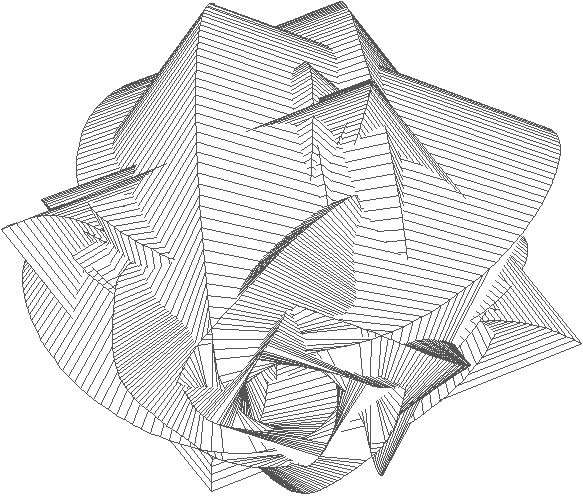
Or maybe like this:
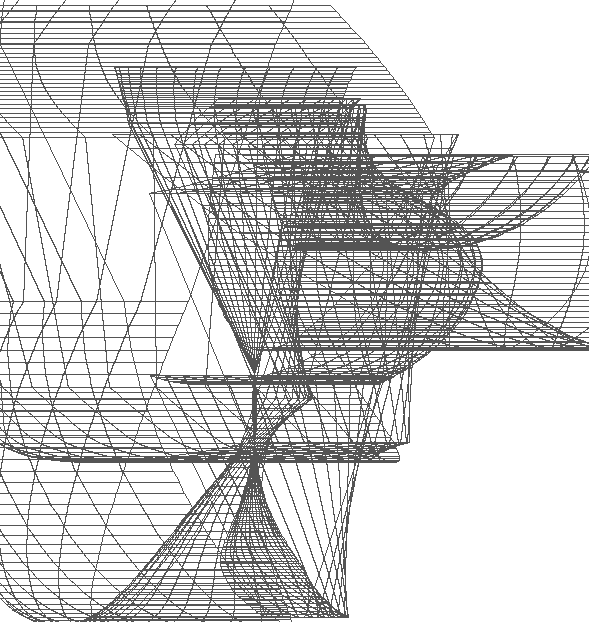
Anyway, I think a transhumanist cemetery, called Multiple Choice Loins, looks like this:
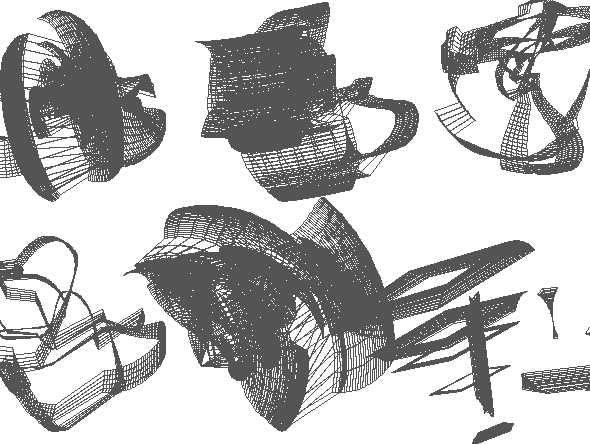
|